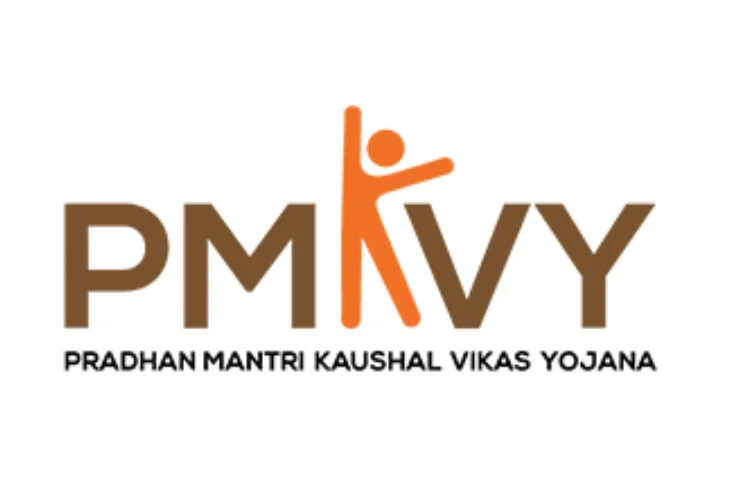The Pradhan Mantri Kaushal Vikas Yojana (PMKVY) is a flagship skill development initiative of the Indian government. The scheme was launched in 2015 under the Ministry of Skill Development and Entrepreneurship (MSDE). Its primary objective is to empower youth with industry-relevant skills, enhance employability, and enable sustainable livelihoods.
Over the years, PMKVY has evolved through multiple phases, reflecting the changing needs of the job market and emerging technologies. The program also focuses on social inclusion by promoting skill development among women, marginalized communities, and economically weaker sections.
How did PMKVY Evolve Over the Years?
The Pradhan Mantri Kaushal Vikas Yojana has evolved significantly over the years. The details are as follows:
| Phase | Duration | Key Highlights |
| PMKVY 1.0 | 2015-2016 | – Launched on 15th July 2015 (World Youth Skills Day) – Targeted 50 million youth by 2020 – Provided monetary rewards for certification – Introduced industry-led course standards |
| PMKVY 2.0 | 2016-2020 | – Expanded sectoral coverage and geographic reach – Integrated with Make in India, Digital India, and Swachh Bharat – Focused on school dropouts and students pursuing education – Trained and certified 10 million youth, with financial support for entrepreneurship and internships |
| PMKVY 3.0 | 2021-2022 | – Launched on 15th January 2021 to address post-COVID skill challenges – Adopted a decentralized approach with active participation of States, UTs, and Districts – Targeted emerging skills like AI, robotics, and digital literacy – Benefited 800,000 youth with a budget of INR 948.90 crores |
| PMKVY 4.0 | 2022-23 onwards | – Part of the restructured Skill India Programme – Technology-driven, candidate-centric approach – Focus on Industry 4.0 skills: AI, robotics, drones, 5G, cybersecurity, green hydrogen – Promotes on-job training and industry partnerships – Integrated with Skill India Digital Hub (SIDH) – Promotes inclusion: women, tribal communities, marginalized groups |
What are the Objectives of PMKVY 4.0?
PMKVY 4.0 has been designed to meet the dynamic needs of the modern workforce. Its core objectives include:
- Future-Ready Skills: Focus on Industry 4.0 skills like AI, robotics, drones, cybersecurity, and green energy.
- Employability: Provide industry-relevant training and certifications for emerging job sectors.
- Flexible Ecosystem: Technology-driven, candidate-centric platform for career choice and skill development.
- Industry Integration: Promote on-job training through partnerships with industries.
- Social Inclusion: Ensure participation of women, marginalized groups, rural youth, and persons with disabilities.
- Recognition of Prior Learning (RPL): Certify existing skills to boost employment prospects.
- Skilling with Employment & Education: Integrate training with jobs and higher education via Skill India Digital Hub (SIDH).
Check Out: Complete List of Important Schemes for NABARD Grade A Exam
Benefits of PMKVY 4.0
The scheme targets youth aged 15 to 59 years with a focus on:
- School/college dropouts seeking skill development.
- Unemployed or underemployed individuals aiming to improve job prospects.
- Women and marginalized communities, ensuring social equity.
- Industry workers looking for reskilling or upskilling opportunities.
Applicants must have Indian citizenship, basic knowledge of Hindi or English, and be committed to completing training programs.
Also Check: NAVYA Initiative
What are the Key Features of PMKVY 4.0?
PMKVY 4.0 introduces a modernized approach to skill development, making it unique among previous iterations:
- Candidate-centric approach
- Integration with Industry 4.0 (AI, robotics, drones, cybersecurity, 5G, green hydrogen)
- On-job training through industry partnerships
- Technology-driven ecosystem via Skill India Digital Hub (SIDH)
- Short-Term Training (150–300 hours, NSQF-aligned)
- Recognition of Prior Learning (RPL)
- Special projects for marginalized communities and emerging jobs
- Social inclusion (women, tribal communities, SC/ST/OBC)
- Future-ready workforce for emerging sectors
Get ready to crack government job exams with leading educators
What are the Training Components of PMKVY 4.0?
PMKVY 4.0 continues the framework established in previous phases but enhances it for modern industry needs:
1. Short-Term Training (STT)
- Conducted at PMKVY Training Centres (TCs).
- Targeted at school/college dropouts, unemployed youth, and underemployed individuals.
- Training includes soft skills, entrepreneurship, financial literacy, and digital literacy along with technical skills.
- Upon successful completion, candidates receive placement assistance.
2. Recognition of Prior Learning (RPL)
- Certifies existing skills of individuals.
- Targets workers in unregulated or informal sectors.
- Helps improve employability and opens pathways to on-job training and higher roles.
3. Special Projects
- Customized training for marginalized groups, remote areas, or specialized job roles.
- Training can be conducted by government agencies, autonomous bodies, or corporations.
- Focused on future-ready skills not covered in standard courses.
How does PMKVY 4.0 Empower Youth?
PMKVY 4.0 focuses on holistic skill development to ensure youth are prepared for employment or entrepreneurship:
- Global skill alignment for internationally recognized opportunities
- Hands-on learning through on-job training
- Encourages entrepreneurship and start-ups
- Promotes inclusion of women, rural youth, and disadvantaged communities
- Digital access and progress tracking via Skill India Digital Hub (SIDH)
Also Check: List of Government Schemes of India
What are the Achievements of PMKVY?
Details of the achievements after the implementation of PMKVY are as follows:
- Youth Trained: Over 1.63 crore youth trained since inception.
- Women Empowerment: Around 45% women participation, including through initiatives like PANKH.
- Targeted Inclusion: Special focus on tribal communities, prison inmates, and marginalized groups.
- Future-Ready Skills: Training in AI, IoT, robotics, 5G, drones, cybersecurity, and green hydrogen.
- Traditional Crafts Promotion: Upskilling artisans and weavers in regions like Nagaland and J&K.
- Industry Partnerships: Strong collaboration with industries for on-job training and placements.
- Recognition of Prior Learning (RPL): Certifying existing skills for better employment opportunities.
- Integration with Digital Platforms: Seamless access to skilling, education, and employment through Skill India Digital Hub (SIDH).
Why is Pradhan Mantri Kaushal Vikas Yojana Important for India?
The importance of the Pradhan Mantri Kaushal Vikas Yojana (PMKVY) is as follows:
- Addresses the skill gap in the workforce by preparing youth for modern and emerging industries.
- Promotes inclusive growth by targeting women, rural populations, and marginalized groups.
- Supports India’s vision of Atmanirbhar Bharat by creating a self-reliant, skilled workforce.
- Prepares youth for future employment trends, particularly in technology-driven sectors.
- Links skilling, education, and employment for sustainable livelihood opportunities.
Key Takeaways
| Aspect | Details |
| Launch Year | 2015 |
| Latest Phase | PMKVY 4.0 (FY 2022-23) |
| Implementing Agency | MSDE, NSDC |
| Training Components | Short-Term Training, RPL, Special Projects |
| Target Beneficiaries | Youth aged 15-59, marginalized communities, women |
| Courses Offered | 400+ courses in AI, robotics, drones, 5G, cybersecurity, green hydrogen |
| Budget | Integrated under Skill India Programme |
| Focus Areas | Industry 4.0 skills, employment, entrepreneurship, social inclusion |
| Registration | Online via Skill India Digital Hub |
| Achievements | 1.63 crore youth trained, 45% women participation, tribal & disadvantaged group inclusion |
Also Read:
Questions on PMKVY 4.0
- When was PMKVY 4.0 launched?
a) 2015
b) 2020
c) 2022-23
d) 2016
e) 2021
Answer: c) 2022-23 - Which platform integrates skilling, employment, and education in PMKVY 4.0?
a) NSDC Portal
b) DigiLocker
c) Skill India Digital Hub (SIDH)
d) Kaushal Daksht Portal
e) National Career Service
Answer: c) Skill India Digital Hub (SIDH) - Which of the following is NOT a component of PMKVY 4.0?
a) Short-Term Training
b) Recognition of Prior Learning
c) Special Projects
d) Skill Loan Scheme
e) All are components
Answer: d) Skill Loan Scheme - What is the age group targeted under PMKVY 4.0?
a) 14-35
b) 15-59
c) 18-45
d) 10-30
e) 20-50
Answer: b) 15-59 - Which of the following is an emerging technology emphasized in PMKVY 4.0?
a) AI
b) Drones
c) Green Hydrogen
d) 5G Technology
e) All of the above
Answer: e) All of the above - Which ministry implements PMKVY 4.0?
a) Ministry of Home Affairs
b) Ministry of Finance
c) Ministry of Skill Development & Entrepreneurship
d) Ministry of Education
e) Ministry of Labour
Answer: c) Ministry of Skill Development & Entrepreneurship - What is the main focus of the Recognition of Prior Learning (RPL) component?
a) Provide theoretical knowledge only
b) Certify existing skills of workers
c) Provide financial aid for education
d) Offer long-term training programs
e) None of the above
Answer: b) Certify existing skills of workers - Which program under PMKVY focuses on marginalized communities and difficult areas?
a) STT
b) RPL
c) Special Projects
d) Kaushal Mela
e) NSDM
Answer: c) Special Projects - What is the key benefit of PMKVY 4.0’s candidate-centric approach?
a) Centralized training schedule
b) Empower candidates to choose career paths
c) Only women empowerment
d) Focus on unskilled labor only
e) None of the above
Answer: b) Empower candidates to choose career paths - Which phase of PMKVY first introduced a decentralized approach?
a) PMKVY 1.0
b) PMKVY 2.0
c) PMKVY 3.0
d) PMKVY 4.0
e) None of the above
Answer: c) PMKVY 3.0
- MISHTI Scheme, India’s Initiative to Restore Mangrove Ecosystems
- National Green Hydrogen Mission Features, Objectives, and Benefits
- Paramparagat Krishi Vikas Yojana, Transforming India’s Organic Farming
- Mission on Integrated Development of Horticulture NHM and HMNEH
- Swachh Bharat Mission, India’s Journey Towards Cleanliness and Hygiene
- SAGY, A Step Towards Holistic Development of Indian Villages

Priti Palit, is an accomplished edtech writer with 4+ years of experience in Regulatory Exams and other multiple government exams. With a passion for education and a keen eye for detail, she has contributed significantly to the field of online learning. Priti’s expertise and dedication continue to empower aspiring individuals in their pursuit of success in government examinations.
